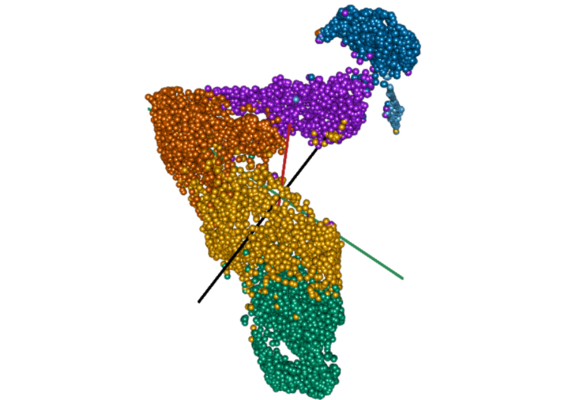
Single-Cell Analysis – Quantum Leap in Science and Medicine
The human body is a complex system consisting of various organs. The organs, in turn, are built from countless cells. An adult human being is made up of about 30 trillion cells. To get an idea of what that means: 30 trillion is a huge 14-digits number:

Each cell is just a tiny fraction of a millimeter in size. Previous generations of researchers examined tissue under the microscope. They were only able to derive a small amount of information from the samples, for example about the shape and size of cells. Single-cell sequencing, by contrast, highly resolves and separately displays the function of tissues and organs for each of the cells they contain.
Thousands of data per cell are collected in this way, defining a cellular fingerprint. This is an enormous technological advancement and indeed a quantum leap in research and medicine, as the scientific journal Science makes clear. It selected single-cell analysis as the breakthrough of the year in 2018.

Covid-19 Lung Macrophages
Macrophages found in a patient with Covid-19. RGL model. Saliba lab, © HIRI, Oliver Dietrich
Conducting research on the basis of the individual cell, as we do with single-cell analysis, also involves identifying relevant information from big data. Würzburg researchers are pioneers in this still young branch of basic research in the life sciences. To efficiently process and interpret the wealth of data collected, other technologies such as AI – artificial intelligence –, machine learning and Bayesian statistics come into action.
Unprecedented Opportunities
Whether in an organ or a sore, pathogens often hide in just a few of a patient's trillion cells. Detecting these problematic cells very early and with high precision through single-cell sequencing creates unprecedented opportunities for medical diagnostics, screening and therapy. From infectious diseases to cancer to neurodegenerative or cardiovascular diseases: Imagine being able to effectively prepare yourself against an emerging disease well before the onset, before the first symptoms – and perhaps avoid irreversible consequences?
Single-cell research paves the way for future precision medicine. It will play a key role in developing novel, tailored, highly efficient therapeutics. By collecting and analyzing big data from patient samples it will be possible some day to predict reliably and as early as possible whether and when a disease will emerge and how it will progress.
Cutting-Edge Technologies on Site
To fully harness the power of single-cell analysis, we utilize the latest technologies and devices.
Single-Cell Platforms and Protocols
- 10x Genomics Chromium Controller
- 10x Genomics Chromium X Controller
- 10x Genomics CytAssist (for spatial transcriptomics using Visium HD)
- 10x Genomics Xenium Platform (spatial transcriptomics)
- Smart-seq v4 (Takara Biosciences)
- Flash-seq (home-made)
- Curio Biosciences
- Single-Cell MAS Iso-seq (PacBio)
Single-cell isolation and sorting
- BD FACS Aria III
- BD FACS Aria Fusion
Lab automation
- Labcyte Echo
- Cytena Idot
- Formulatrix Mantis
Sequencing
- NextSeq 2000
- NovaSeq 6000
- NovaSeq Xplus (HZI)









